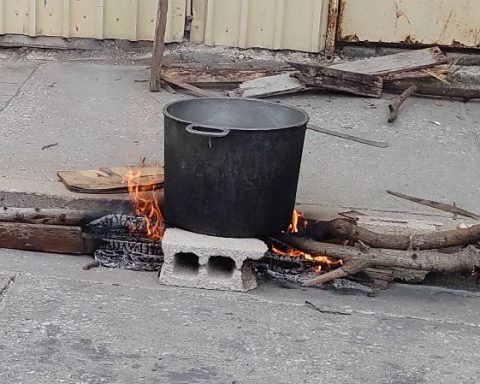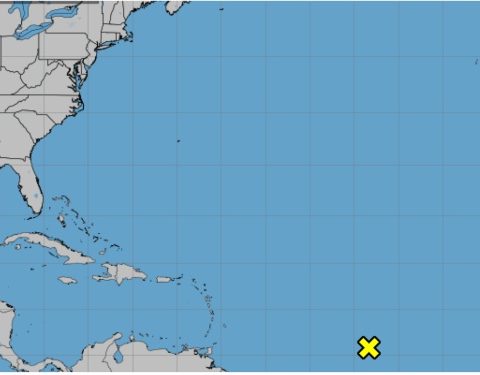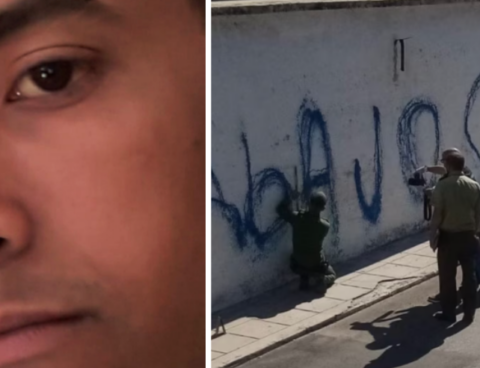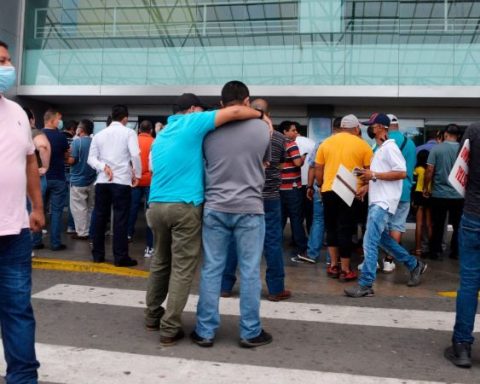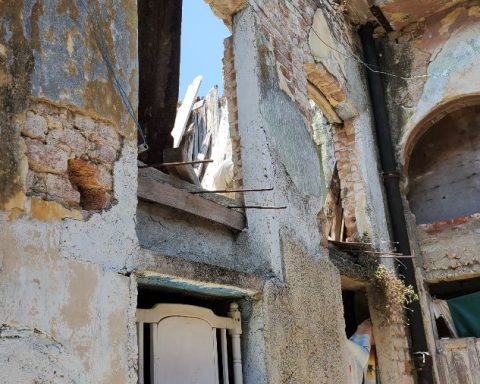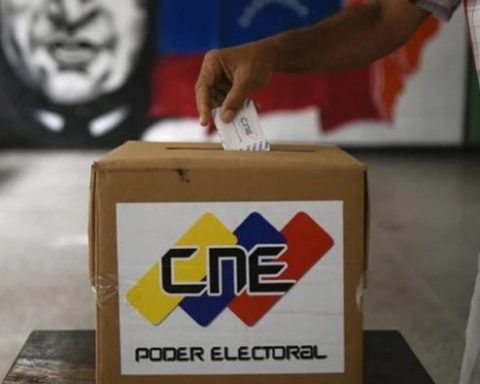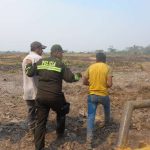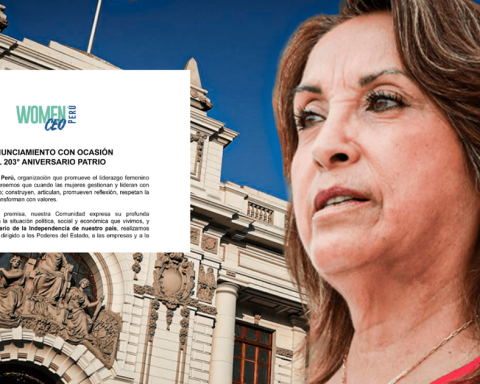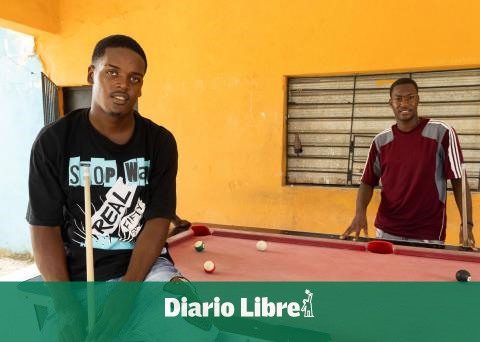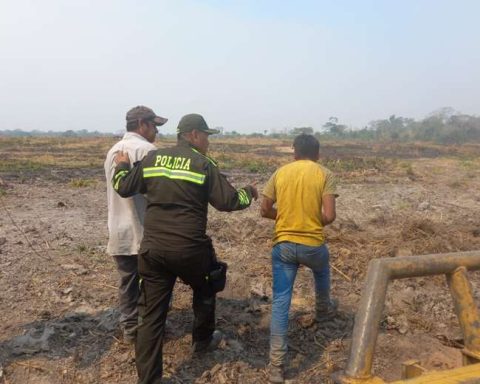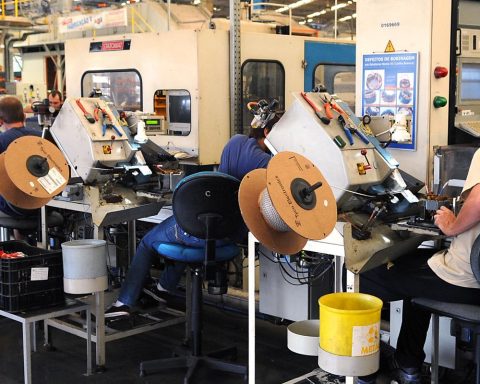HAVANA, Cuba.- I could not see the development of the conflict from the beginning. When I turned on the TV, it had already started, and the plot seemed well advanced, perhaps too far advanced. I don’t know why I assumed that the address belonged to Magda González Grau. I really do not know? The conflict, at least the one I saw, revolved around a crack. A not very big crack in the wall of an old Havana building. In addition to the raja there was also a photographer with a retinue of models; women and men decked out in muslin, tulle, silk, and faux Parisian organza that the wind labored to beat; and adornments, head adornments and jewels that I assumed to be false, pure props, but simulated jewels.
The crack was not big, it was rather discreet, without much protrusion. I think that only a very careful look could discover it, notice its presence in the middle of that Havana wall, a crack, perhaps not a very big one, but a crack after all, one of those that grows over time, that becomes large and above all dangerous. . The photographer was accompanied by an entourage of men and women, all decked out in those suits that Cuban television tries to pass off as elegant, even luxurious, and even ancient.
The retinue of adorned men that accompanied the photographer pretended to be, at least in some way, Versaillesque, and they posed in multiple points of Old Havana. The “luxury of rags” pretending disagreements with an old city. A city that seemed to be waiting for the photographer’s gaze for a long time, longing for the lens to see it, waiting for the click and the flash. And all that embellishment stopped then in one of those buildings in the oldest part, I insist that it could be in Old Havana or perhaps in Centro Habana, or in Cerro, taking into account the bruised structures, the peeling walls that contribute the years, but also laziness.
I think it could be anywhere in this old and dilapidated city, where I always write from. The fact is that those women posed their fabrics and their figures in front of the camera and its creator, right next to a crack. And from the top of a balcony a man appeared who immediately came down, grumbling, fighting, demanding that they leave, that they not point their camera lens at his walls. The owner of that house complained, and argued, saying that the house was his, that he went to live there after his marriage, and that his children and grandchildren were born there.
The offended man continued to scream, he showed the mortification caused by those who tried to put their eyes on the crack, but not on the rest, that rest that was not uncorked, that was not painted. The photographer committed to the crack and the inhabitant of the house against it, very much against it, and he only shut up after a policeman, in this case with very good manners, wanted to know what was happening, and he told himself everything that up to Now I have counted.
We can already guess the end, the photographer did not achieve the contrast of the illuminated suits with that trace of poverty in Havana, testimony of our many miseries. The photographer couldn’t put his finger on the sore spot, I meant the crack, I meant the lack of interest, I meant misery, I meant the death of this old city; before so elegant, so beautiful, so different, so sane, so hospitable and a little more polite and generous. And the photographer failed to press the shutter on his camera after pointing the lens at his target.
He could not, never could photograph that crack, nor many others that exist in the “wonder city”. The photographer must have been disappointed with the clumsy prohibitions. The photographer was unable to fix the crack to show it and question it because the inhabitant closest to the crack prohibited him, and also the policeman, the one who represents the law, the one who represents the state, the communist government. And what did they see in that crack? What would you see in that image? They looked at a setback, a betrayal, they looked at an ingratitude, they looked at a complaint.
The communists prefer that the crack grows, that it becomes enormous, however they fear that it becomes visible, that it contrasts with the tulles and the abundance. The crack is a building that collapses, a balcony that falls and kills girls, it’s 11J. The crack is hunger and our empty freezers. The crack is the endless queues, the crowd of generals killed in just a few days, the full prisons. The crack is Maykel Osorbo and Luis Manuel Otero, and all the prisoners, the children murdered in Sagüa la Grande. The crack we are many.
The crack is the massive and risky escapes. The crack is the dramatic grammar of power. The crack is how grotesque power is; it is our passive conscience, the unwillingness to take the risks that accompany the fight for freedom, but it could also be retracing the tightrope step by step without risk, and not paying for the definitive solutions.
Without looking at the crack and its growths, its developments, its courses, we don’t get anywhere, and the building falls, and we put the dead ones. Let us remember that at point zero the cracks in the walls are not visible at all, they are not. A crack causes another crack, and then another. The crack is the anticipation of the collapse, the cause of the tidal wave, of the volcano that is about to explode, and that is why they do not want us to look at it, and that is why the man who is the owner of the house is there, the one who has lived there since Many years ago. That man who does not want the shutter to be pressed, and neither does the policeman who beats you and locks you up in a cell, while the powerful applaud the veiled crack, and silence the deaths.
OPINION ARTICLE
The opinions expressed in this article are the sole responsibility of the issuer and do not necessarily represent the opinion of CubaNet.
Receive information from CubaNet on your cell phone through WhatsApp. Send us a message with the word “CUBA” on the phone +1 (786) 316-2072, You can also subscribe to our electronic newsletter by giving click here.
The post Hide the crack, that is the question appeared first on CubaNet.

